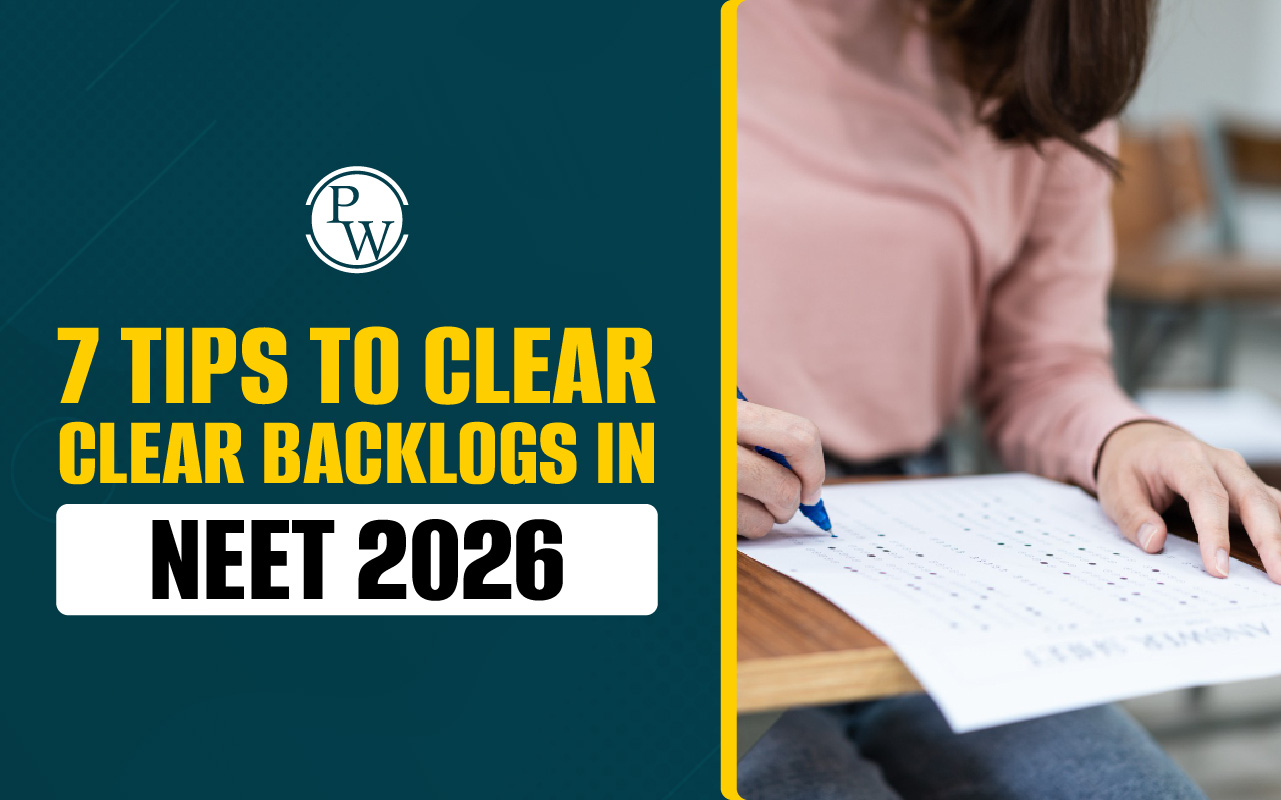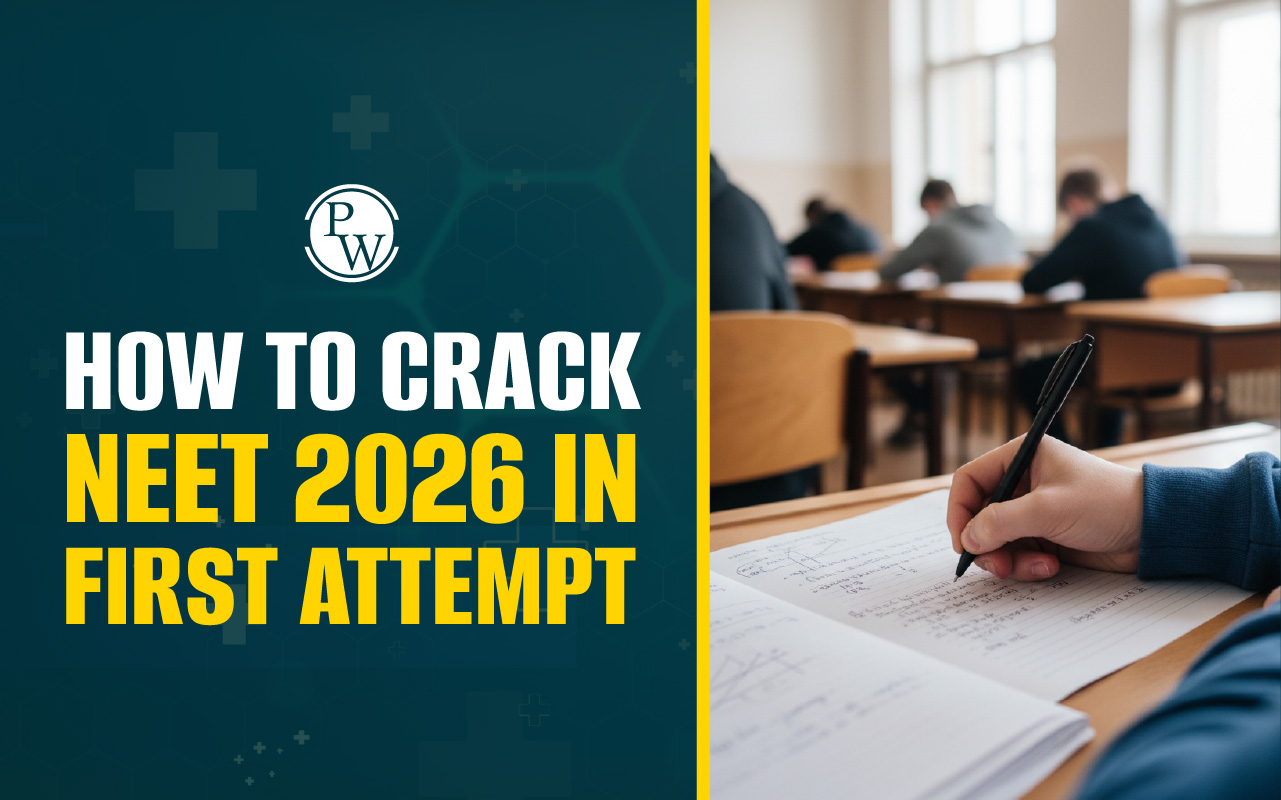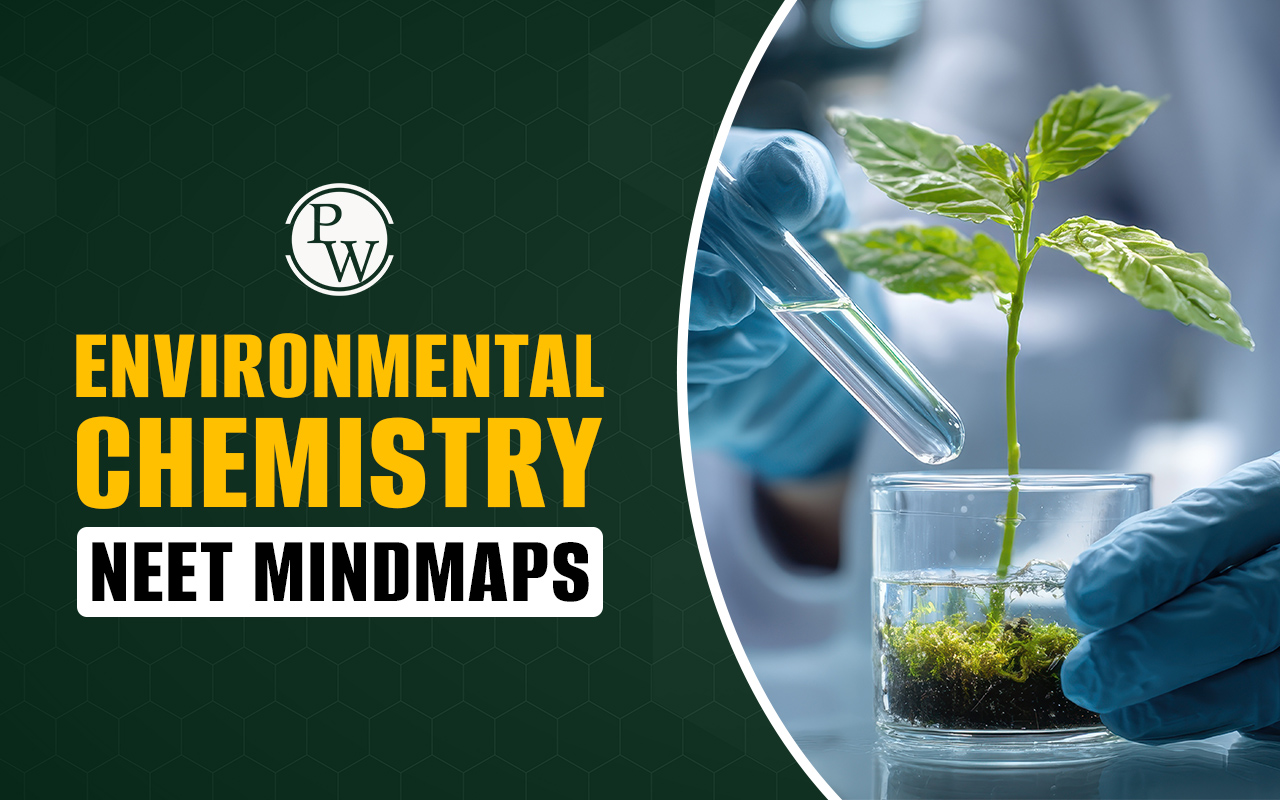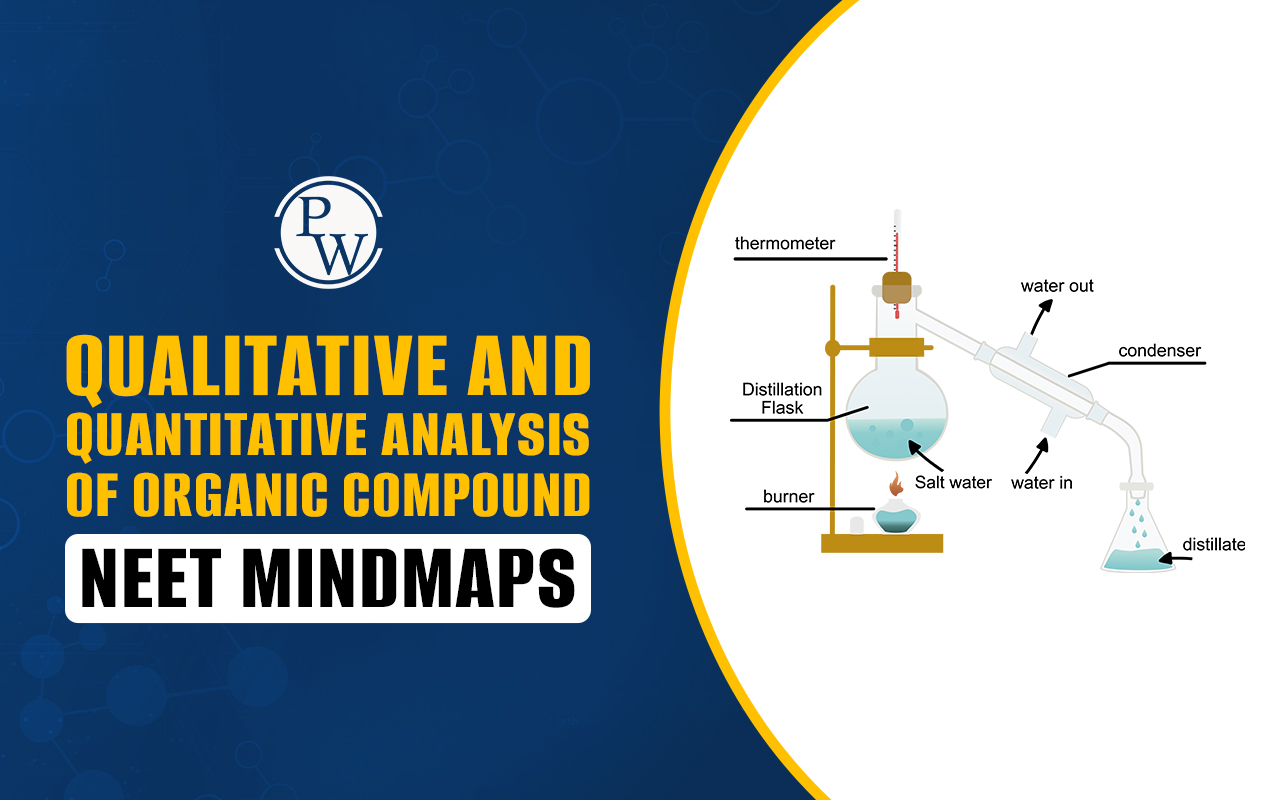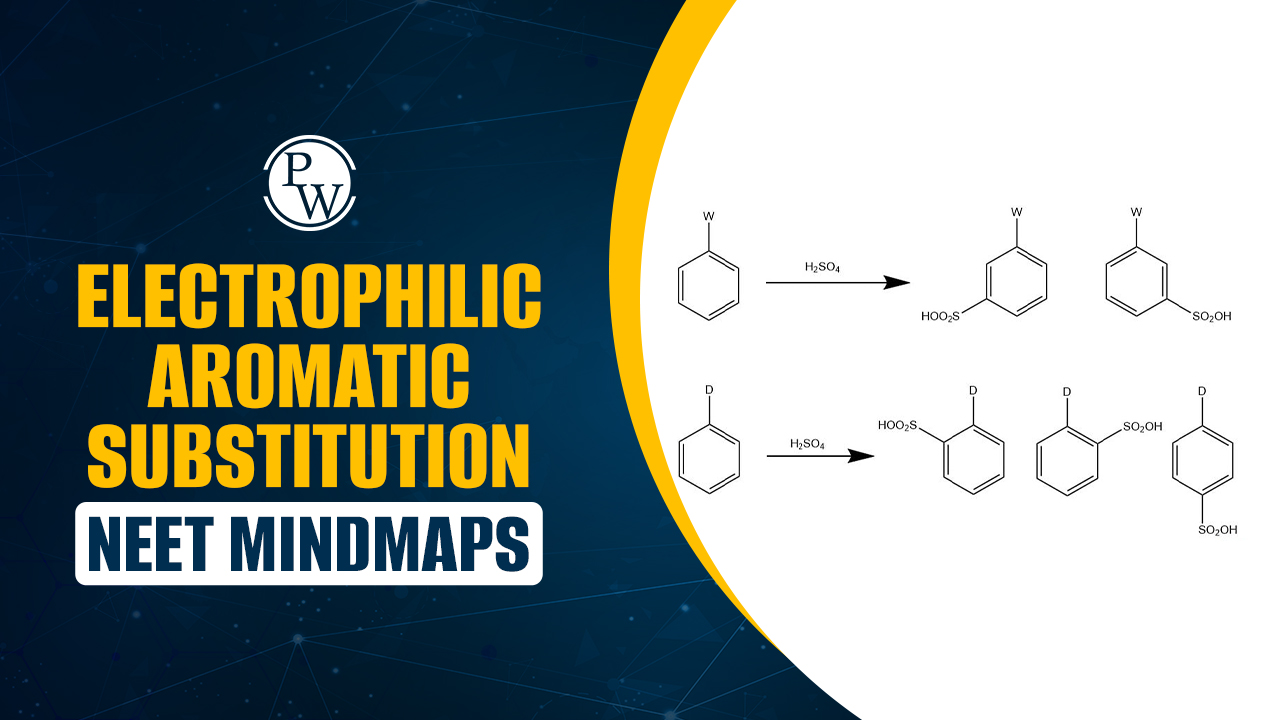
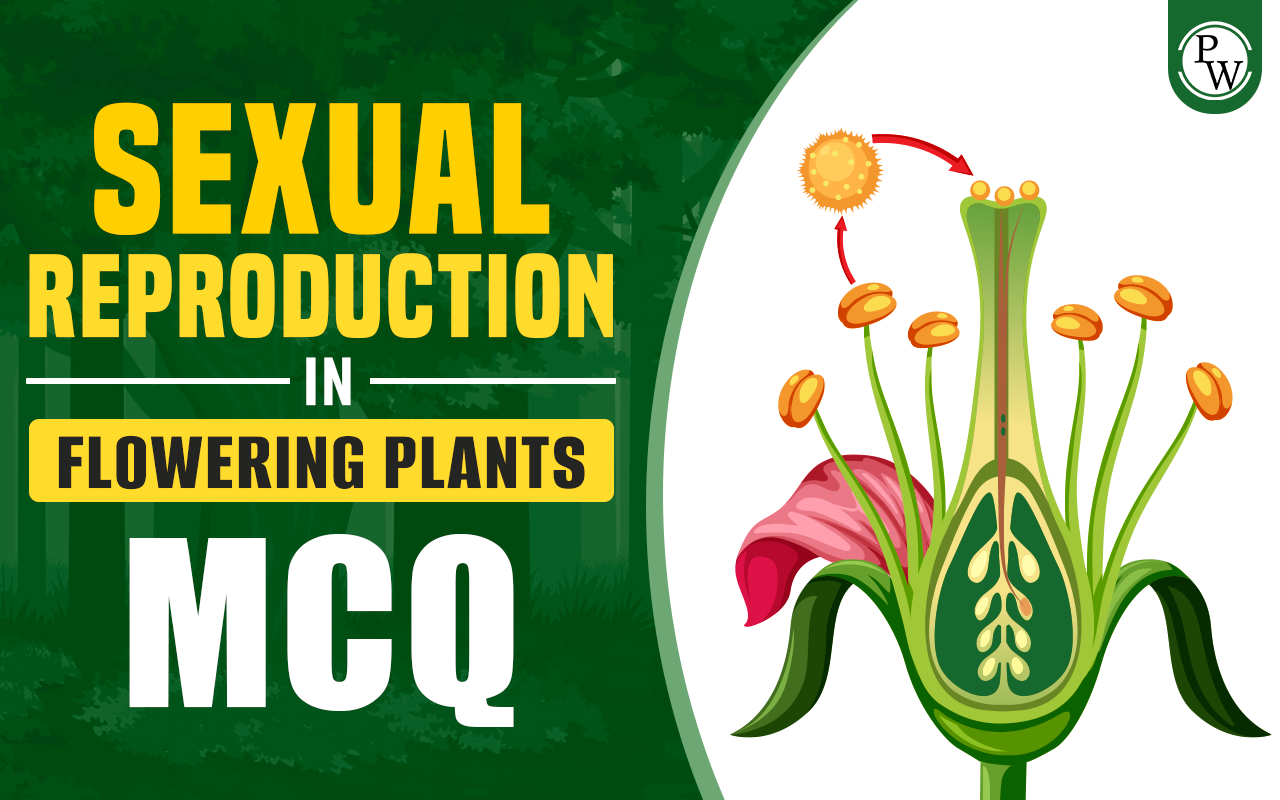
Sexual Reproduction In Flowering Plants MCQs: Sexual Reproduction in flowering plants is a key topic in the NEET syllabus, contributing 6% to the overall weightage. This section covers the processes of pollination, fertilization, seed formation, and the roles of different reproductive structures. Practicing NEET biology MCQs on this topic will help solidify concepts, enhance problem-solving abilities, and improve exam speed. Students can refer to sexual reproduction in flowering plants NEET notes for detailed study and a deeper understanding of these processes.
Sexual Reproduction In Flowering Plants MCQs Overview
The reproduction process in flowering plants involves both sexual and asexual methods. This topic focuses on pollination (both cross-pollination and self-pollination), fertilization, seed development, and various types of flowers, such as unisexual and bisexual. Through MCQs, students can sharpen their understanding of these processes, which is vital for cracking the NEET exam.
Download Last 5 Years NEET Previous Year Question Papers PDF
Free NEET PYQ PDF
Sexual Reproduction In Flowering Plants MCQs and Explanations
Here are some Sexual Reproduction In Flowering Plants MCQs for practice that will help in improving your understanding and speed in this important topic.
Q1: Which of the following flowers can produce seeds even without a pollinator?
A. Water lily
B. Water hyacinth
C. Yucca
D. Cleistogamous flowers of Oxalis
Answer: D. Cleistogamous flowers of Oxalis
Explanation: Cleistogamous flowers are self-pollinating, meaning they can produce seeds without the need for external pollinators.
Q2: Which features of pollen grains are found in wind-pollinated flowers?
A. Mucilaginous covering
B. Light and ribbon-like
C. Light and non-sticky
D. Heavy and sticky
Answer: C. Light and non-sticky
Explanation: Wind-pollinated flowers usually have light, non-sticky pollen grains to easily travel through the air.
Q3: Apomixis is a characteristic of:
A. Members of the Asteraceae family
B. Water lily
C. Zostera
D. Castor
Answer: A. Members of the Asteraceae family
Explanation: Apomixis is a form of asexual reproduction in plants, commonly seen in the Asteraceae family.
Q4: Given below are two statements: one is labelled as Assertion A and the other is labelled as Reason R:
Assertion A: Yucca plant and moth cannot complete their life cycles without each other.
Reason R: The moth deposits its eggs in the anther of the flower (Yucca), in turn, gets pollinated by the moth.
Choose the correct answer from the options given below:
A. A is true but R is false.
B. A is false but R is true.
C. Both A and R are true and R is the correct explanation of A.
D. Both A and R are true but R is not the correct explanation of A.
Answer: C. Both A and R are true and R is the correct explanation of A
Explanation: The Yucca plant and its pollinator, the moth, have a mutual relationship where the moth deposits its eggs and facilitates the pollination process.
Q5: Match List I with List II:
|
List I |
List II |
|
A. Egg apparatus |
I. 7-celled and 8-nucleate |
|
B. Embryo sac |
II. Male gametophyte |
|
C. Pollen grain |
III. Primary endosperm nucleus |
|
D. Triploid |
IV. Two synergids and one egg cell |
Choose the correct answer from the options given below:
A. A-IV, B-II, C-III, D-I
B. A-IV, B-I, C-II, D-III
C. A-IV, B-III, C-I, D-II
D. A-I, B-II, C-III, D-IV
Answer: B. A-IV, B-I, C-II, D-III
Explanation: The egg apparatus consists of two synergids and one egg cell, the embryo sac is 7-celled and 8-nucleate, the pollen grain represents the male gametophyte, and the triploid refers to the primary endosperm nucleus.
Q6: Persistent nucellus present in some seeds is called:
A. Pericarp
B. Endocarp
C. Testa
D. Perisperm
Answer: D. Perisperm
Explanation: The persistent nucellus in certain seeds, such as those of castor, is called perisperm.
Q7: Which flowers are large, colourful, fragrant, and rich in nectar?
A. Majority of insect-pollinated flowers
B. Majority of water-pollinated flowers
C. Majority of wind-pollinated flowers
D. Some water-pollinated flowers
Answer: A. Majority of insect-pollinated flowers
Explanation: Insect-pollinated flowers are often large, colourful, fragrant, and produce nectar to attract pollinators.
Q8: Given below are two statements: one is labelled as Assertion A and the other is labelled as Reason R:
Assertion A: Hybrids are made into apomict to maintain hybrid characters.
Reason R: While producing seed by apomixis, there is no segregation of characters in the hybrid progeny.
Choose the correct answer from the options given below:
A. A is true but R is false.
B. A is false but R is true.
C. Both A and R are true and R is the correct explanation of A.
D. Both A and R are true but R is not the correct explanation of A.
Answer: C. Both A and R are true and R is the correct explanation of A
Explanation: In apomixis, the seed produced does not undergo segregation, thus maintaining the hybrid characteristics.
Q9: Coconut water from tender coconut is:
A. Free-nuclear endosperm
B. Cellular endosperm
C. Endocarp
D. Mesocarp
Answer: A. Free-nuclear endosperm
Explanation: Coconut water is a form of free-nuclear endosperm, which is the liquid inside the coconut.
Q10: The male gametes from pollen tube are released into:
A. Egg cell
B. Central cell
C. One of the synergid
D. One of the antipodals
Answer: C. One of the synergid
Explanation: The male gametes are released into one of the synergids, which are cells present in the ovule of the flower.
Q11: Triple fusion results in the formation of:
A. Zygote
B. Primary endosperm cell
C. Embryo
D. Seed coat
Answer: B. Primary endosperm cell
Explanation: Triple fusion results in the formation of the primary endosperm cell, which is triploid and contributes to the development of the endosperm.
Q12: Match List I with List II:
|
List I |
List II |
|
A. Hypocotyl |
I. Terminates with the plumule or stem tip |
|
B. Epicotyl |
II. Cotyledon in grass family |
|
C. Scutellum |
III. Develop from the wall of the ovary |
|
D. Pericarp |
IV. Terminates at its lower end in the radicle or root tip |
Choose the correct answer from the options given below:
A. A-IV, B-II, C-III, D-I
B. A-IV, B-I, C-II, D-III
C. A-IV, B-III, C-I, D-II
D. A-I, B-II, C-III, D-IV
Answer: B. A-IV, B-I, C-II, D-III
Explanation: Hypocotyl terminates at the lower end of the radicle, epicotyl terminates at the stem tip, scutellum is found in the grass family, and pericarp develops from the ovary wall.
Q13: Which of the following is the same as autogamy at the genetic level?
A. Syngamy
B. Xenogamy
C. Geitonogamy
D. Triple fusion
Answer: A. Syngamy
Explanation: Syngamy is the fusion of male and female gametes from the same individual, similar to autogamy at the genetic level.
Q14: Which of the following substances cannot be degraded by any enzyme?
A. Cellulose
B. Pectin
C. Lignin
D. Sporopollenin
Answer: D. Sporopollenin
Explanation: Sporopollenin is a highly resistant biopolymer found in the walls of pollen grains and is not easily degraded by enzymes.
Q15: Production of embryo sac from the functional megaspore involves:
A. Single meiotic division
B. First meiotic division then two successive mitotic divisions
C. First meiotic division then three successive mitotic divisions
D. Three successive mitotic divisions
Answer: C. First meiotic division then three successive mitotic divisions
Explanation: The formation of the embryo sac involves one meiotic division followed by three mitotic divisions to form the mature sac.
Prepare for NEET with PW Online NEET Coaching! Our courses offer structured lessons, clear explanations of concepts, and interactive classes to support your NEET preparation effectively.
Sexual Reproduction In Flowering Plants MCQs FAQs
What is the reproduction process of flowering plants?
What is the sexual reproduction in flowering plants module?
What are the 7 steps of plant reproduction?
What is plant sperm called?
What is the female part of a flower called?


